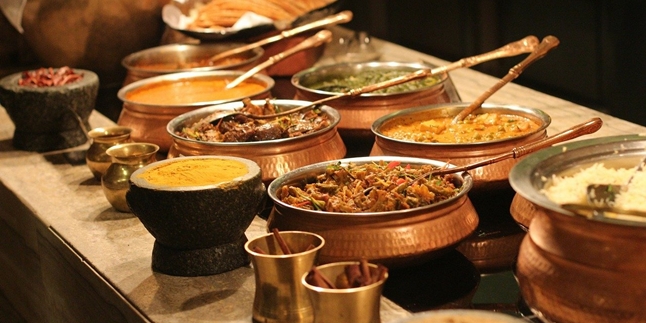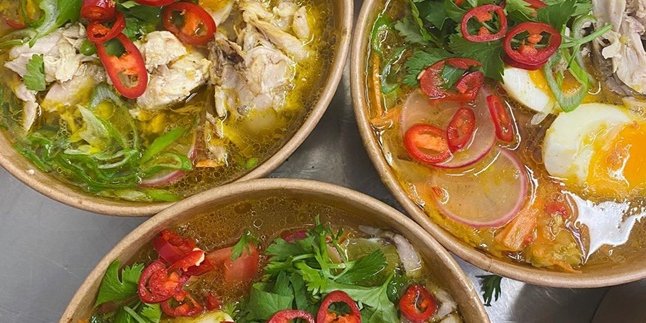Kapanlagi.com - When Idul Fitri arrives, every country has its own traditions and foods that will be served to celebrate the Idul Fitri holiday. Every year, these dishes are mandatory and become a symbol of Idul Fitri. The philosophy behind Idul Fitri dishes varies, each region has its own philosophy contained in these dishes.
Usually, the dishes during Idul Fitri are almost the same and only a few are slightly different. The dishes that have similarities are found in almost all regions in Indonesia, such as ketupat, opor, and also kue.
Apparently, these three foods also have their meanings, not only delicious as Idul Fitri dishes, but they also have many meanings behind the food served. Therefore, according to various sources, here are the 7 meanings of Idul Fitri dishes in Indonesia, which you must know.
1. Ketupat
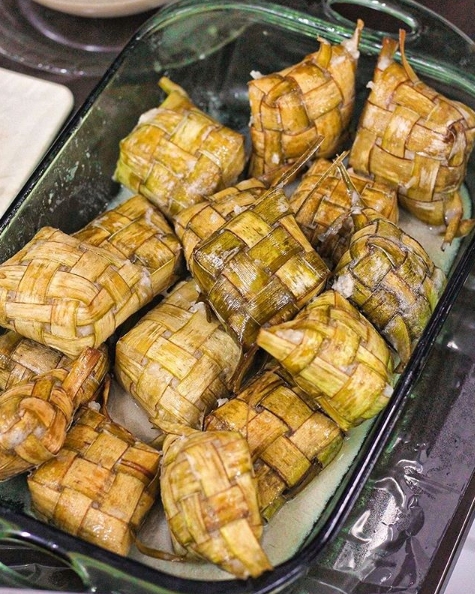
Ketupat (credit: instagram.com/betamakan.mdn)
The philosophy of the first dish of Idul Fitri is ketupat. This dish is always a must-have when Idul Fitri arrives and becomes a favorite food for Muslims in Indonesia. Ketupat itself is rice that is put into a young coconut leaf weave, boiled until cooked, and can be served with coconut milk soup and chicken or beef.
Ketupat itself has a philosophy in celebrating Idul Fitri. For Javanese people, ketupat has the meaning of Ngaku Lepat and Laku Papat. The meaning of Ngaku Lepat is to admit all mistakes, this is a sungkeman tradition that is an implementation of admitting mistakes. In this sungkeman tradition, it teaches the importance of respecting parents, being humble, seeking sincerity, and forgiveness from others, especially parents.
And the meaning of Laku Papat is, four actions in celebrating Idul Fitri. The four actions are lebaran, luberan, leburan, and laburan. For Eid, it means that fasting has ended, and the door of forgiveness is wide open.
As for luberan, it means abundance, or as a symbol of teaching to give alms to the poor, such as performing zakat. As for leburan, it means to be finished or to melt away. Where your sins and mistakes have been finished and melted away in this holy month. Meanwhile, laburan means lime, which means a substance commonly used for water purification and whitewashing walls. With the intention of enabling humans to always maintain purity in both body and soul.
2. Opor Ayam
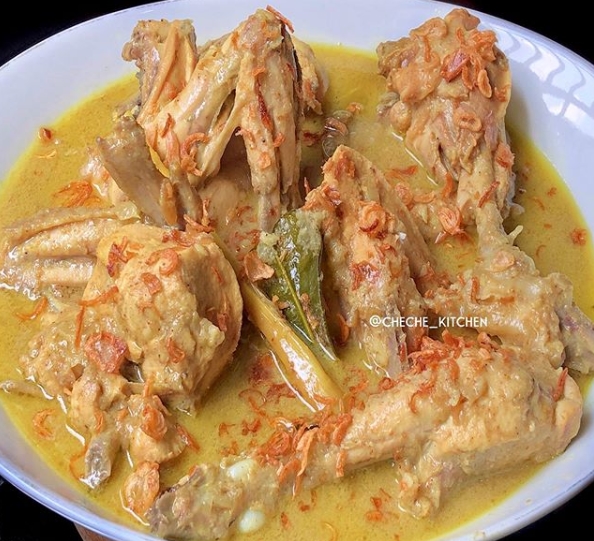
Opor Ayam (credit: instagram.com/cheche_kitchen)
The philosophy of the second Idul Fitri dish, opor, is that it is a partner to ketupat. Opor itself is a chicken dish made with coconut milk, thick and savory broth. With coconut milk as its main ingredient, it is called santen in Javanese, which means forgiveness.
That's why opor is always paired with ketupat, because it is believed to be a symbol of apology. And the apology is sincere, to rectify mistakes with a pure and clean heart.
3. Lepet

Lepet (credit: instagram.com/madamjundi)
Still in the form of rice, the philosophy of the next Idul Fitri dish is lepet. Just like ketupat, lepet is also wrapped in young coconut leaves and then boiled. But what sets ketupat and lepet apart is the elongated shape of lepet.
It turns out that lepet also has its own philosophy, which is Silep Kang Rapet, which means buried tightly. The meaning of being buried tightly is that the mistakes of our brothers and sisters can be forgiven and kept secret, not to be brought up again. This is intended to maintain good brotherhood and relationships among human beings.
4. Rendang
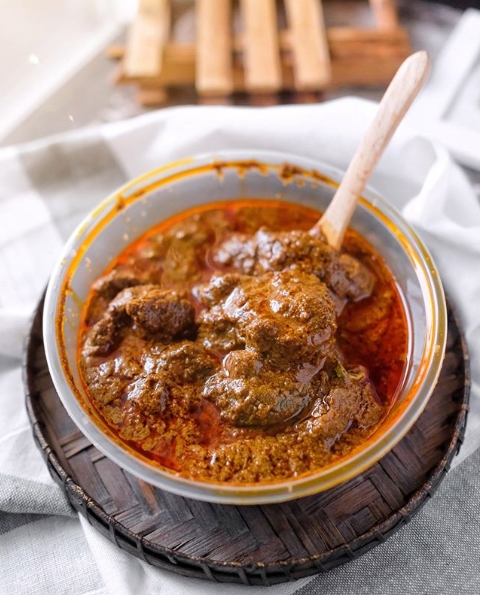
Rendang (credit: instagram.com/eatandcapture)
Food that comes from the Minang region turns out to be a dish that also has a philosophy during the Eid al-Fitr. Rendang is a dish that uses many spices when cooking, and beef is the main ingredient. Just like gudeg, rendang also belongs to the food that will taste better when continuously heated, that's why rendang has a brown color.
The oil produced from rendang is also coconut milk that has turned into oil, that's why rendang has such a savory and delicious taste. The philosophy of rendang itself is to have the meaning of deliberation and consensus, this is because rendang has four elements, namely meat, coconut, pepper, and spices.
The meaning of meat itself represents the traditional leaders, then coconut represents scholars and thinkers, next pepper represents the ulama, and finally spices become the coordinator and unifier of everything. That's why rendang is always served during important ceremonies such as weddings, traditional events, kenduri, and religious events like Eid al-Fitr.
5. Ketan

Ketan (credit: instagram.com/anandacooknbakery)
The philosophy of the next Idul Fitri dish is ketan. It turns out that ketan, which is always a mandatory dish during Idul Fitri, has a philosophy. With its sticky texture, ketan is usually made into snacks like lemper, or paired with sambal goreng or abon.
The philosophy of ketan itself in Javanese is 'ngreketken ikatan', which means strengthening bonds. This is meant to symbolize the Indonesian culture of maintaining social connections from house to house during Idul Fitri, to preserve and strengthen brotherhood through the bond of togetherness.
6. Telur Pindang
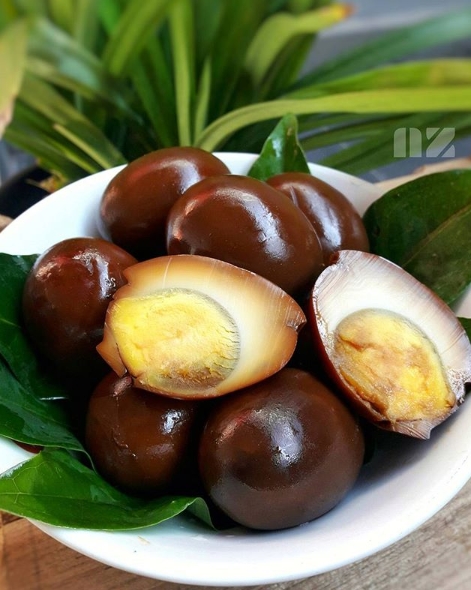
Preserved Eggs (credit: instagram.com/alfinazulfa91)
It turns out that telur pindang (preserved eggs) also has a philosophy as an Idul Fitri dish. Originally, telur pindang came from Chinese culture, cooked with spices and tea. But now, telur pindang is cooked with spices and soy sauce, giving it a dark brown color.
The meaning of telur pindang itself is fertility and prosperity. It is hoped that after fasting in the holy month of Ramadan, we will continue to be blessed with fertility and prosperity in the future.
7. Apem
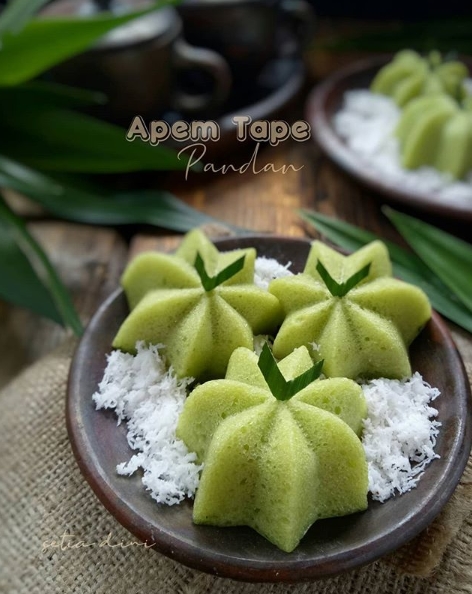
Apem (credit: instagram.com/setia_dini91)
And the last philosophy of the Eid al-Fitr dish is apem. Perhaps for the Javanese people, apem cake is a meaningful symbol that must be present when celebrating Eid al-Fitr. This traditional cake made from rice flour has bright colors, such as pink, green, and also brown. Of course, this cake also has a soft texture, so it will be very easy to eat.
And the meaning of apem during Eid al-Fitr is that apem is a name derived from the Arabic language, which means forgiveness. For Javanese people, it will be a little difficult to pronounce it in Arabic dialect, so they call it apem. That is why apem cake becomes a symbol of forgiveness that exists during Eid al-Fitr.
Those are the 7 philosophies of the Eid al-Fitr dishes that are always served during Eid al-Fitr. Not only being a beautiful and delicious dish, but the above food also has profound philosophies and meanings for those who serve it.
(kpl/dhm)
Disclaimer: This translation from Bahasa Indonesia to English has been generated by Artificial Intelligence.
